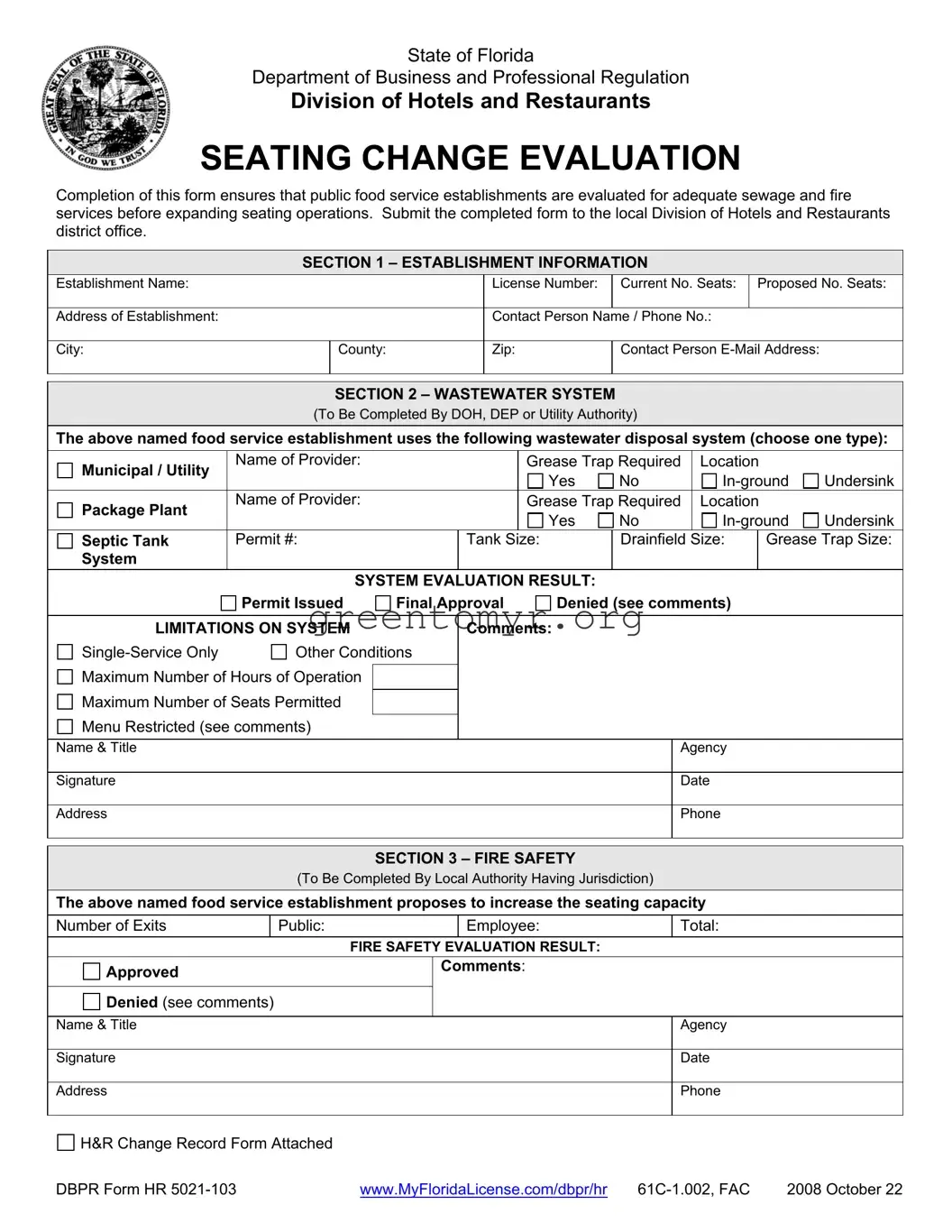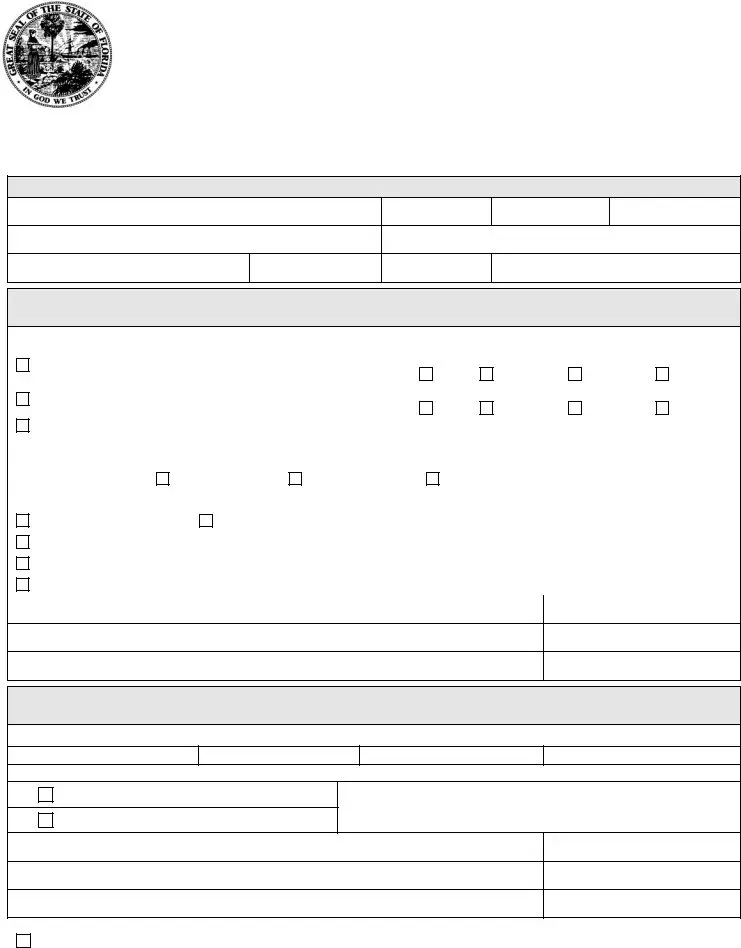Filling out the DBPR HR 5021 103 form can feel daunting, but many common mistakes can lead to delays or denials. One frequent error occurs in Section 1, where individuals sometimes provide incomplete or inaccurate establishment information. It is essential to include the establishment name, license number, and accurate contact details. Without this fundamental information, the processing authority may struggle to identify or reach your establishment, ultimately leading to a stalled evaluation.
In Section 2, concerning the wastewater system, selecting the correct type of system is crucial. Many people inadvertently choose the wrong disposal method, which can result in an improper evaluation. For instance, if your establishment uses a septic tank, selecting “municipal” instead will mislead the review process, causing unnecessary complications. Each checkmark must reflect reality to ensure accuracy.
Furthermore, some applicants overlook providing the necessary permit numbers or tank sizes. Incomplete information about grease traps or septic systems can hinder the evaluation process. Take the time to double-check these details before submission. Documentation, such as the septic tank permit number, is vital for a smooth approval process. This information supports your case and demonstrates compliance with crucial health and safety regulations.
Another common mistake involves misunderstandings around the fire safety evaluation section. Applicants sometimes fail to provide correct counts for the number of exits or misrepresent the proposed change in seating capacity. Incorrectly assessing these figures not only affects safety compliance but can also lead to significant scrutiny from local authorities. Ensure that all numbers are accurate and properly represent your establishment's layout.
Finally, neglecting to attach the necessary forms and documentation can lead to significant delays. Applicants may forget to include the H&R Change Record Form, which the authorities might require for processing. Ensure every document is included to facilitate a quick evaluation. By avoiding these common pitfalls, food service establishments can streamline their form filling experience and move closer to achieving their seating expansion goals.

